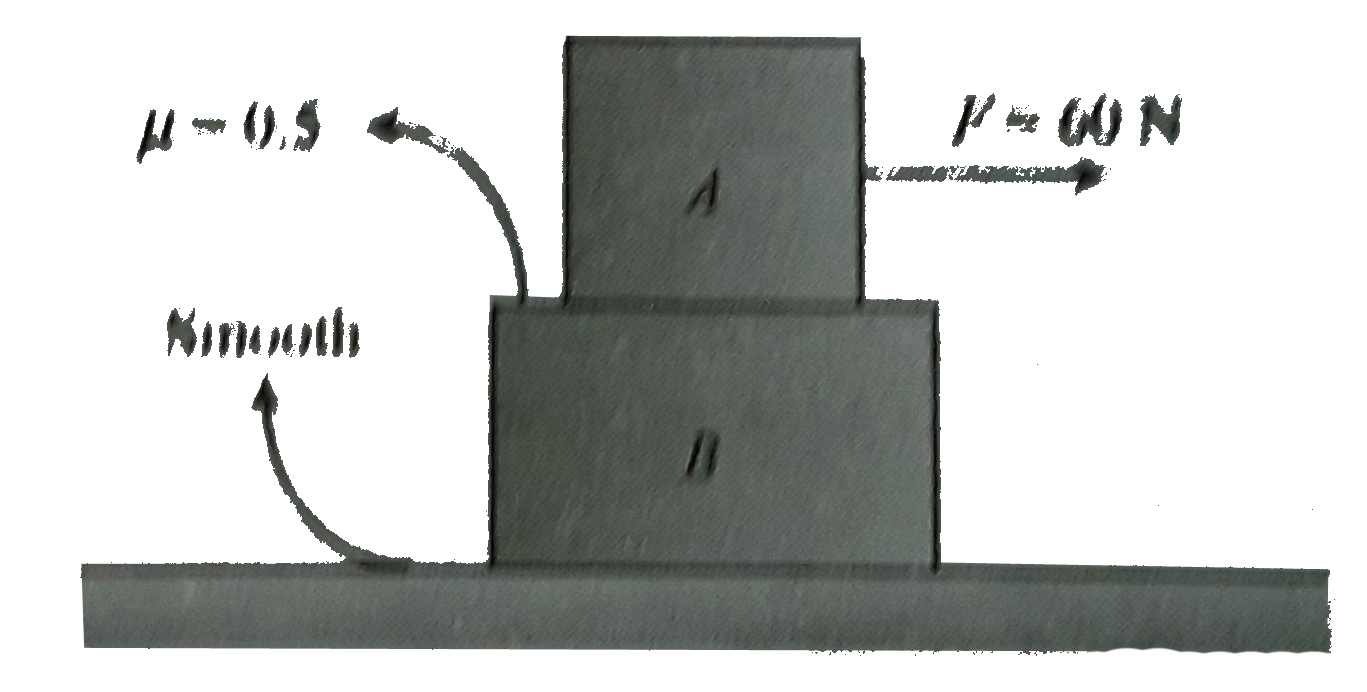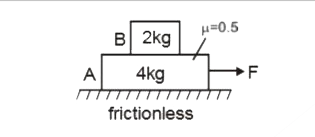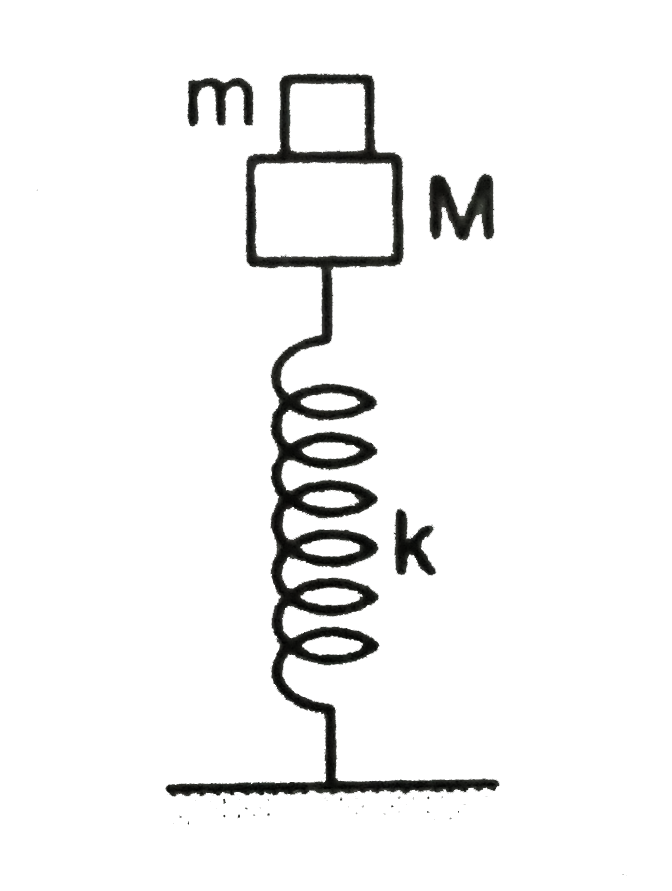Find maximum force for which the two blocks can move together.
375
Topper's Solved these Questions
- BOOK - RESNICK AND HALLIDAYCHAPTER - FORCE AND MOTION-IIEXERCISE - PROBLEMS33videos
FORCE AND MOTION-II
- BOOK - RESNICK AND HALLIDAYCHAPTER - FORCE AND MOTION-IIEXERCISE - PRACTICE QUESTIONS (Single Correct Choice Type)23videos
FORCE AND MOTION-II
- BOOK - RESNICK AND HALLIDAYCHAPTER - FORCE AND MOTION-IIEXERCISE - PRACTICE QUESTIONS (Integer Type)1videos
FORCE AND MOTION-II
- BOOK - RESNICK AND HALLIDAYCHAPTER - FORCE AND MOTION - I EXERCISE - PRACTICE QUESTIONS (Integer Type)3videos
FORCE AND MOTION - I
- BOOK - RESNICK AND HALLIDAYCHAPTER - GAUSS' LAW EXERCISE - PRACTICE QUESTIONS (INTEGER TYPE)3videos
GAUSS' LAW
Similar Questions
In above example find maximum F for which two blocks will move together.
View SolutionFind maximum force for which they can move together
View SolutionFind the acceleration of the two blocks The system initally at rest and the friction coefficient are as shown in fig 7.140? Also find maximum F for which two blocks will move togather Given mA=10kgandmB=20kg
 View Solution
View Solution
Find out the maximum value of F for which both the blocks will move together.View SolutionThe coefficient of friction between the blocks are μs=0.3 and μk=0.2. (a) Find the maximum value of F so that the blocks move together. (b) If force F is twice the value found in (a), find the acceleration of each block.
 View Solution
View Solution
Find out the range of force in which both the blocks move together.View SolutionTwo block , with masses m1 and m2 are staked as shown in fig and placed on a frictionless horizontal surface . There is a friction between the two block .An external force of magnitude F is applied to the top block at an angle α below the horizontal . The coefficient of friction between m1 and m2 are μs
b. If the two blocks move together, find their acceleration
b . Calculate the maximum value of force so that blocks will move together
 View Solution
View SolutionA small block of mass m is kept on a bigger block of mass M which is attached to a vertical spring of spring constant k as shown in the figure. The system oscilates verticaly. a.Find the resultant force on the smaller block when it is displaced through a distance x above its equilibrium position. b. find the normal force on the smaller blok at this position. When is this force smallest smaller block at this position. When is this force smallest in magnitude? c. What can be the maximum amplitude with which the two blocks may oscillate together?
 View Solution
View SolutionWhat is the maximum value of force, so that both the blocks will move together ?
 View Solution
View SolutionTwo blocks of mass 2kg and 1kg are at rest on a smooth surface as shown. There is friction between 2kg and 1kg block with μ=0.5. Find maximum force to be applied on 1 kg for the two blocks to move together.
 View Solution
View Solution

